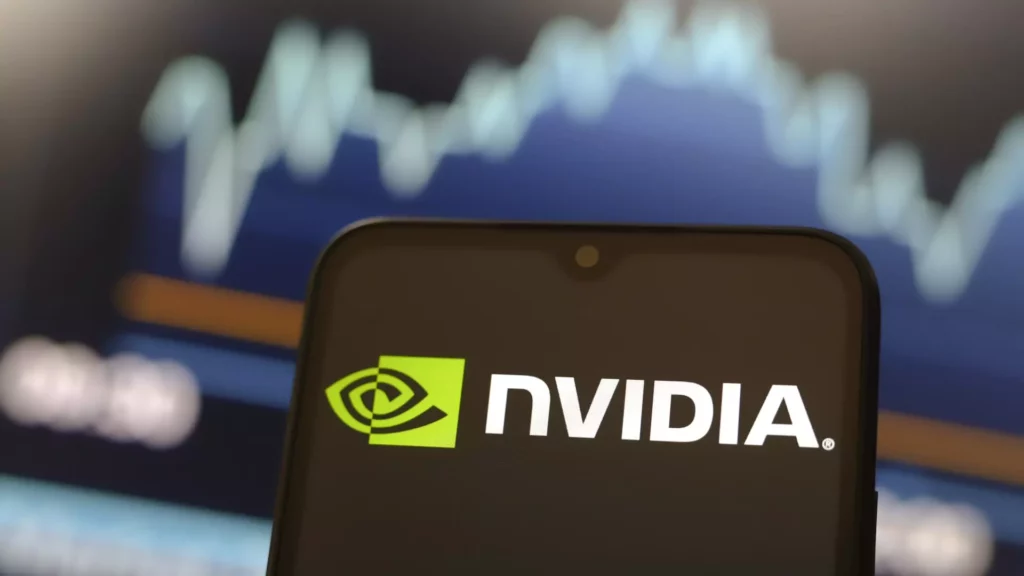Nvidia’s stock performance has become a focal point of investor attention lately, particularly as it slipped into correction territory this past Monday. Despite the Nasdaq Composite reaching new heights, Nvidia’s shares, which had previously soared by an impressive 166% this year, encountered a downturn that saw the company’s stock price fall by 4.5% in December alone. As of now, it hovers approximately 11% below its all-time closing peak of $148.88, which was achieved last month. This significant decline denotes a broader concern among investors regarding potential market corrections, specifically the prevalent definition of a correction as a decline of 10% or more from recent highs.
The situation raises questions not only about Nvidia’s monopoly in the artificial intelligence chip market but also about the broader market dynamics influencing stock performance. Keith Lerner, from Truist, aptly noted the indispensable nature of Nvidia’s chips in the current AI infrastructure landscape. However, he also pointed out an emerging trend; other tech giants within the so-called “Magnificent Seven” are beginning to capture investor attention, suggesting a shift in market sentiment.
Profit-Taking Dynamics
Observers of the financial landscape are speculating that Nvidia’s recent underperformance may indicate a wave of profit-taking occurring amongst investors following what has been an exceptionally successful period for the company. With their graphics processing units (GPUs) as essential components driving the demand in data centers—particularly after the explosion of interest following the late-2022 introduction of ChatGPT—Nvidia had previously enjoyed robust status as the kingpin of AI technology. This recent downturn exposes the inherent volatility connected to high-growth stocks, where a prolonged run-up invites cautious strategies such as profit-taking.
Nvidia’s decline amidst a broader market rally may signal deeper issues. The juxtaposition is telling; while Nvidia finds itself in a downturn, other semiconductor stocks such as Broadcom are breaking records with spirited performances. Broadcom itself recently surged by about 11% following a strong earnings report, leading to an impressive market capitalization exceeding $1 trillion. This has led analysts to carefully dissect market trends, observing how momentum-driven dynamics might shift focus away from previously dominant players like Nvidia towards newcomers or mid-tier competitors.
Market Signals and the Path Ahead
What complicates the outlook for Nvidia is the potential implications of its struggles against a backdrop of a rallying Nasdaq. An tepid performance amid fresh market highs can serve as a harbinger of caution for investors. Roth MKM has indicated that the $125 to $130 price range presents a critical threshold for Nvidia and suggests it could serve as an indicator not only for the individual stock but for the semiconductor sector as a whole. Should the stock breach these levels negatively, it might raise alarms about investor confidence in Nvidia’s long-term prospects.
In stark contrast to Nvidia’s plight, other semiconductor firms are thriving, exemplified by figures like Micron Technology and Marvell Technology, which displayed gains of approximately 6% and 3%, respectively. This divergence reveals a significant shift in momentum, with investors perhaps seeking out companies perceived as having more immediate growth potentials.
As Nvidia contemplates its future amidst fluctuating stock performances and a seemingly impervious market, investors find themselves at a crossroads. The recent decline highlights the unpredictable nature of tech stocks, particularly those heavily linked to the meteoric rise of artificial intelligence technologies. The potential for recovery remains, but volatility will likely persist as other players in the semiconductor space capitalize on market momentum away from Nvidia. Hence, for investors navigating this landscape, maintaining a balanced perspective toward valuation and momentum could be key to navigating the tumultuous waters that lie ahead. As the market dynamics continue to evolve, the ability to adapt and identify emerging opportunities within the tech sector may ultimately dictate investment success.

